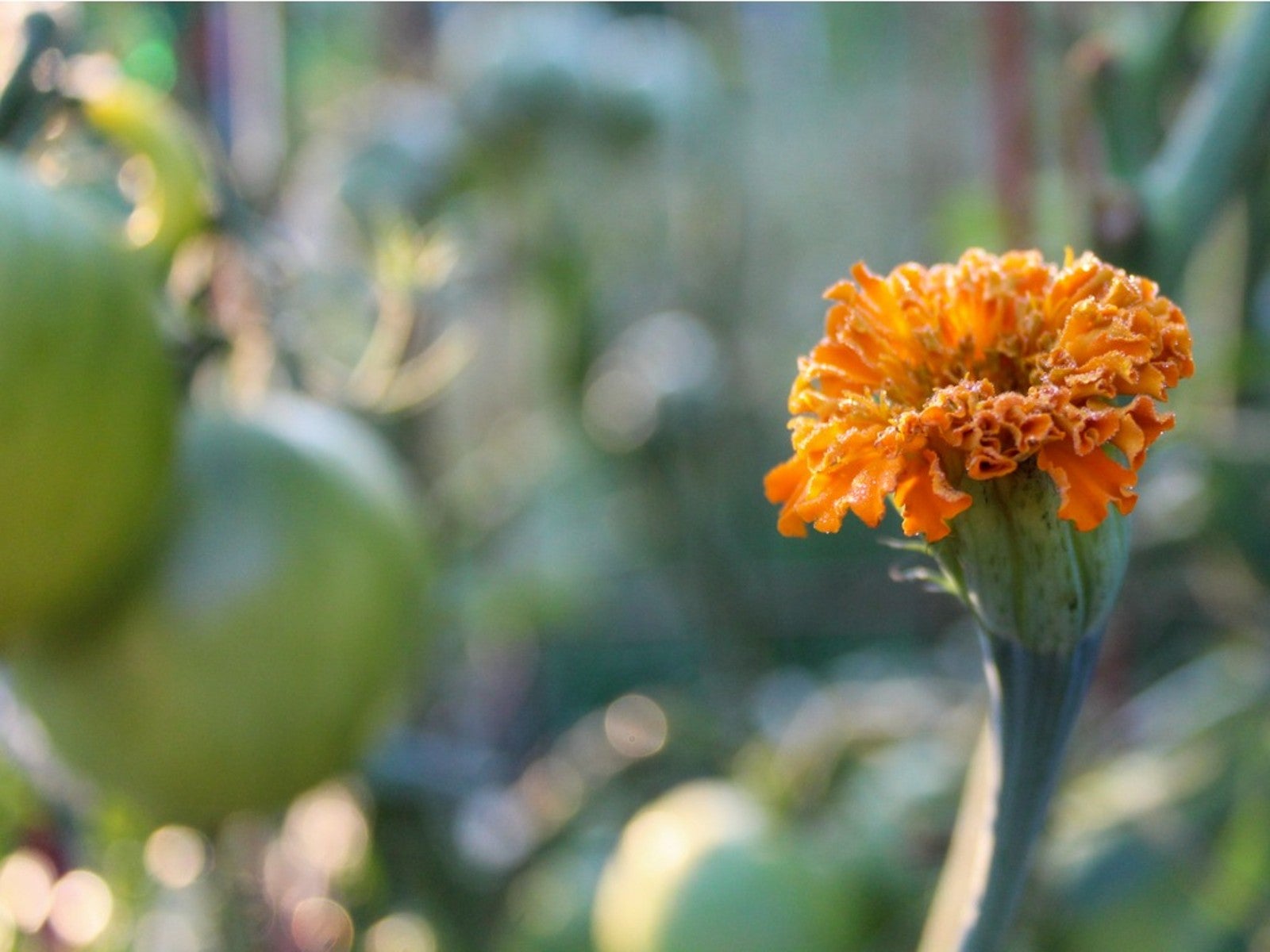Marigold And Tomato Companion Planting: Do Marigolds And Tomatoes Grow Well Together


Marigolds are bright, cheerful, heat and sun-loving annuals that bloom dependably from early summer until the first frost in autumn. However, marigolds are appreciated for much more than their beauty; marigold and tomato companion planting is a tried-and-true technique used by gardeners for hundreds of years. What are the benefits of growing tomatoes and marigolds together? Read on to learn all about it.
Planting Marigolds with Tomatoes
So why do marigolds and tomatoes grow well together? Marigolds and tomatoes are good garden buddies with similar growing conditions. Research studies have indicated that planting marigolds between tomatoes protects the tomato plants from harmful root-knot nematodes in the soil.
Although scientists tend to be skeptical, many gardeners are convinced that the pungent scent of marigolds also discourages a variety of pests such tomato hornworms, whiteflies, thrips, and maybe even rabbits!
Growing Tomatoes and Marigolds Together
Plant tomatoes first, and then dig a hole for a marigold plant. Allow 18 to 24 inches (46-61 cm.) between the marigold and the tomato plant, which is close enough for the marigold to benefit the tomato but allows plenty of space for the tomato to grow. Don’t forget to install a tomato cage.
Plant the marigold in the prepared hole. Water the tomato and marigold deeply. Continue to plant as many marigolds as you like. Note: You can also plant marigold seeds around and between tomato plants, as marigold seeds germinate quickly. Thin the marigolds when they’re 2 to 3 inches (5-78 cm.) tall to prevent overcrowding.
Once the plants are established, you can water the marigold plants along with the tomatoes. Water both at the surface of the soil and avoid overhead watering, as wetting the foliage may promote disease. Watering early in the day is best.
Be careful not to overwater marigolds, however, as they are susceptible to rot in soggy soil. Allow the soil to dry between waterings.
Sign up for the Gardening Know How newsletter today and receive a free copy of our e-book "How to Grow Delicious Tomatoes".
Deadhead marigolds regularly to trigger continued blooming throughout the season. At the end of the growing season, chop the marigolds with a shovel and work the chopped plants into the soil. This is an effective way to use marigolds for nematode control.

A Credentialed Garden Writer, Mary H. Dyer was with Gardening Know How in the very beginning, publishing articles as early as 2007.